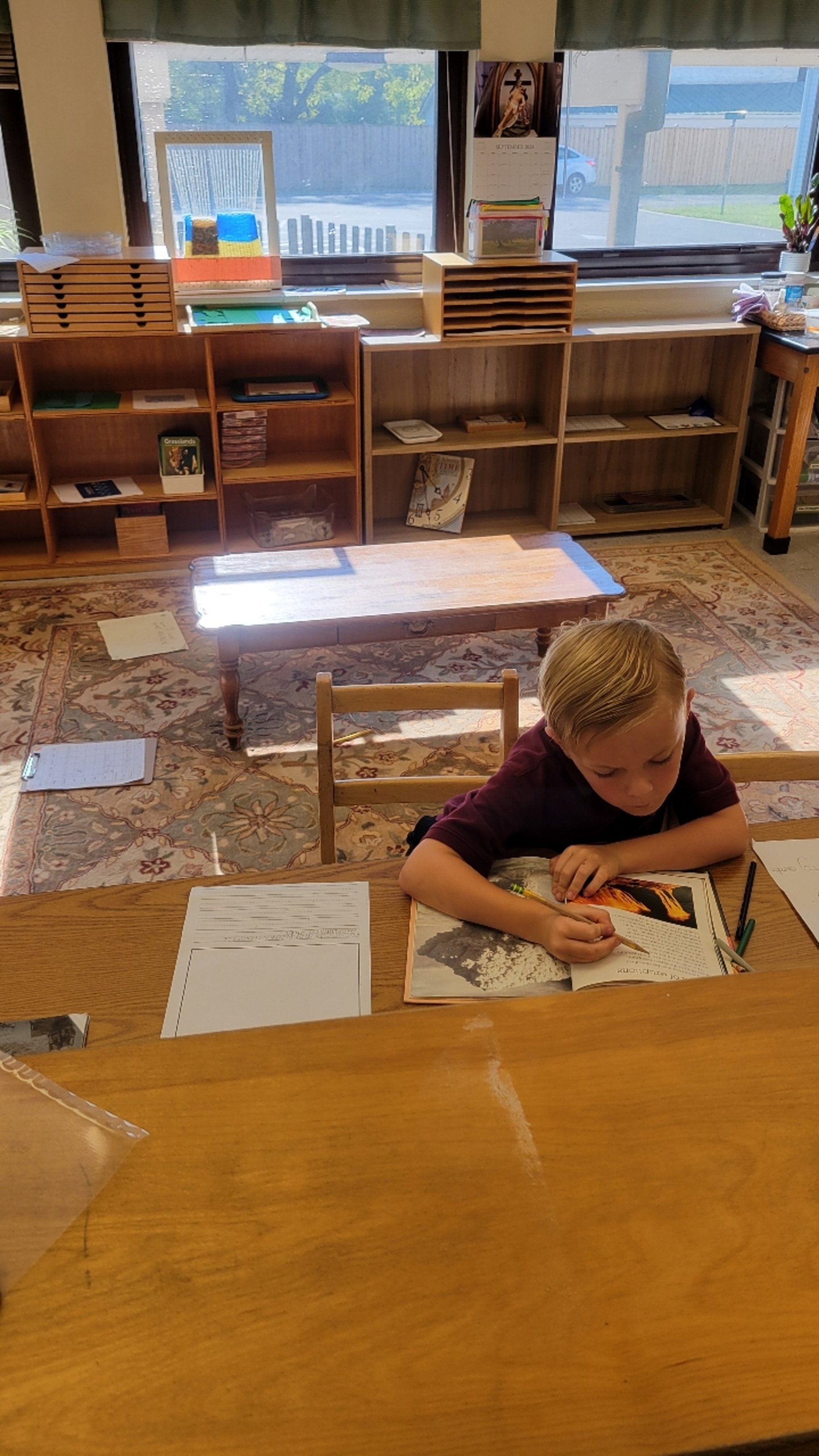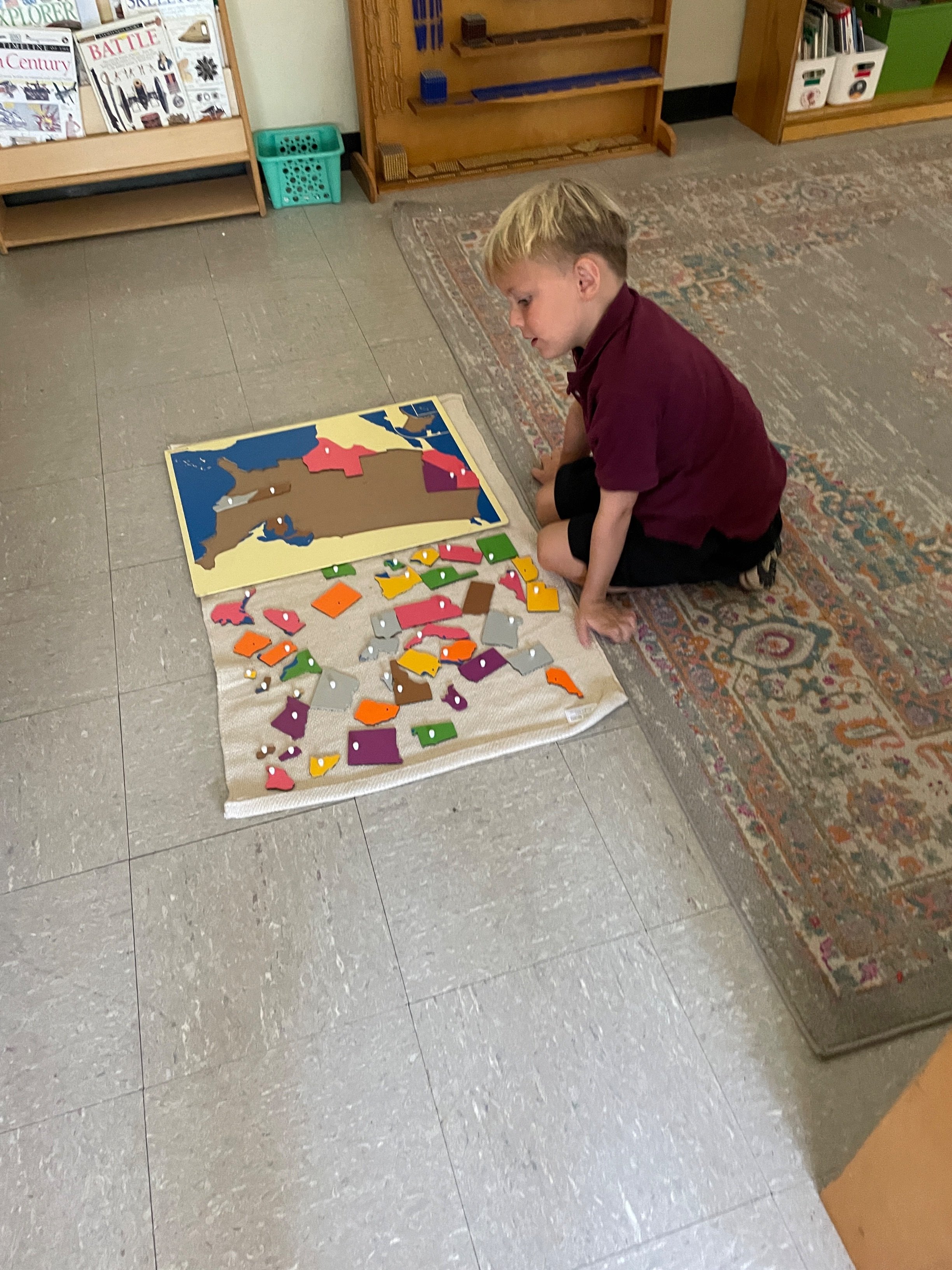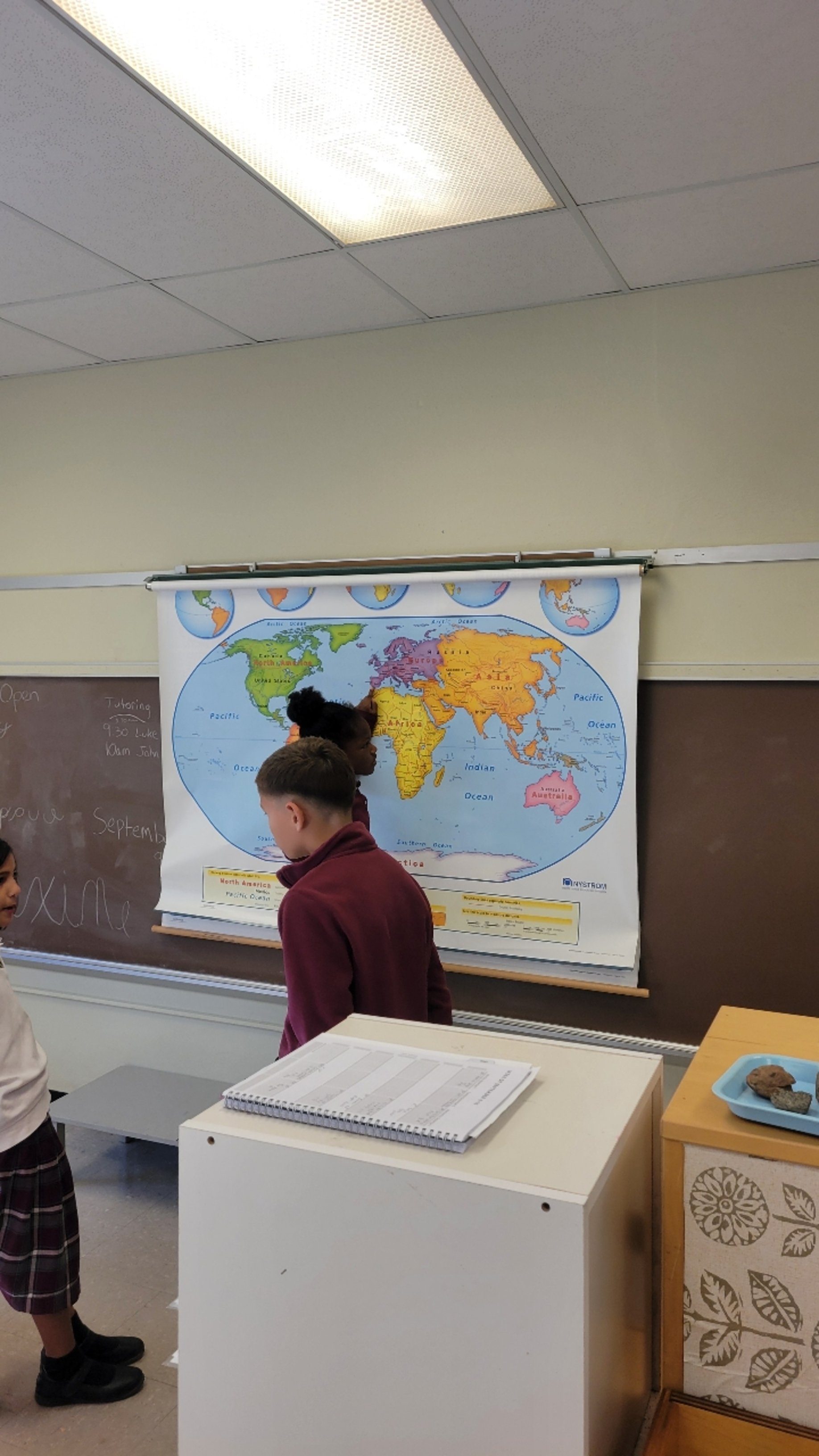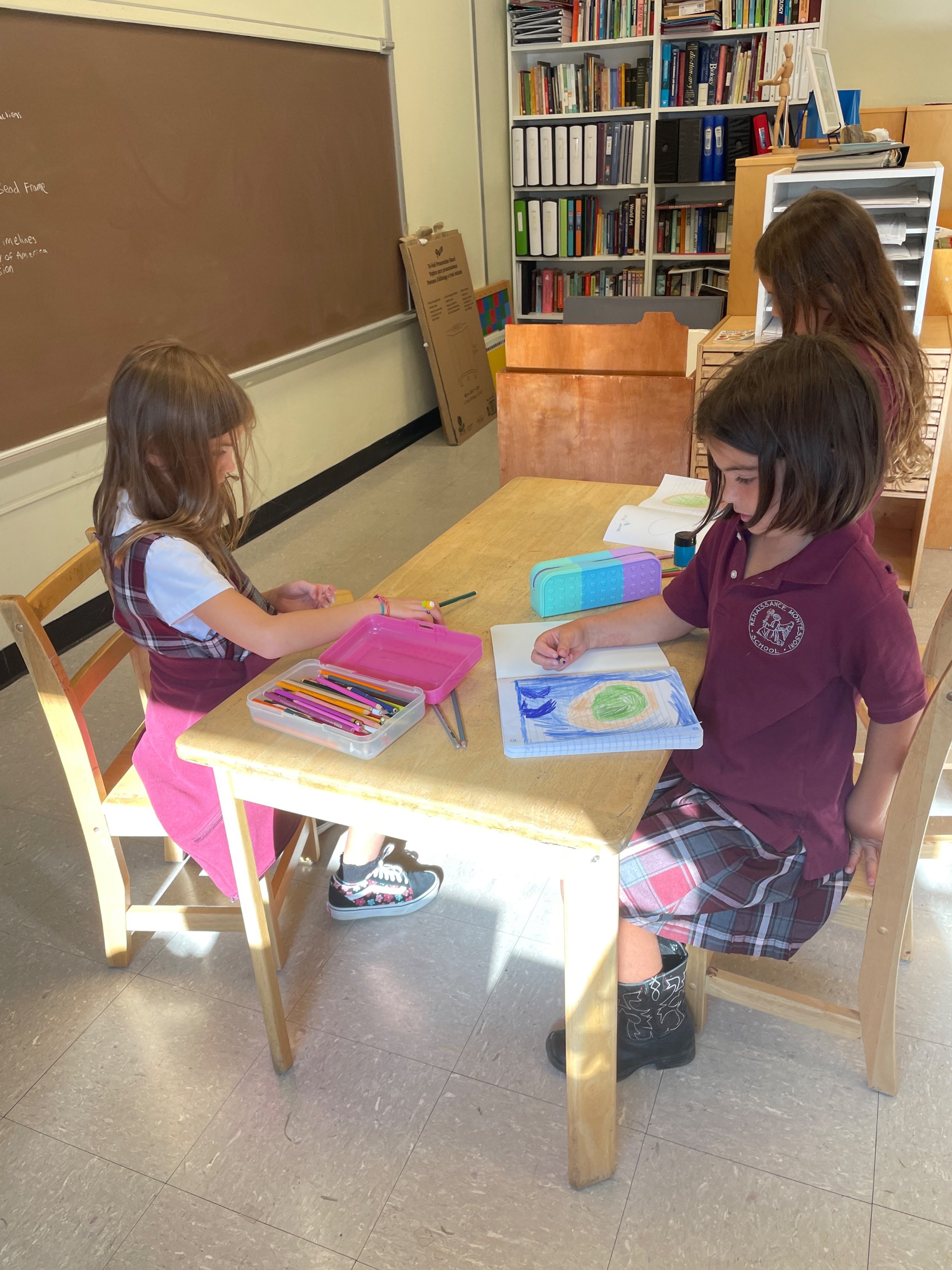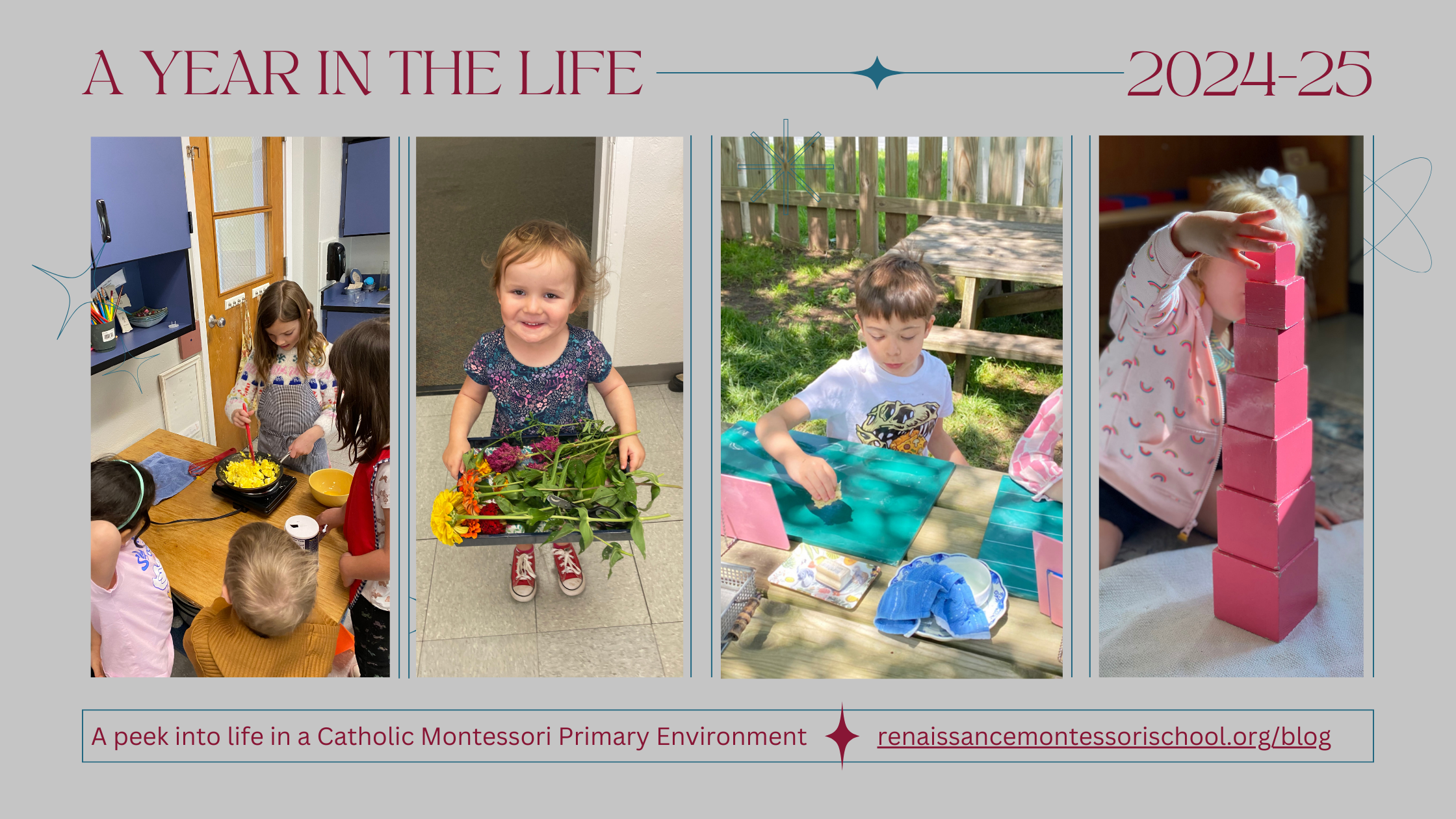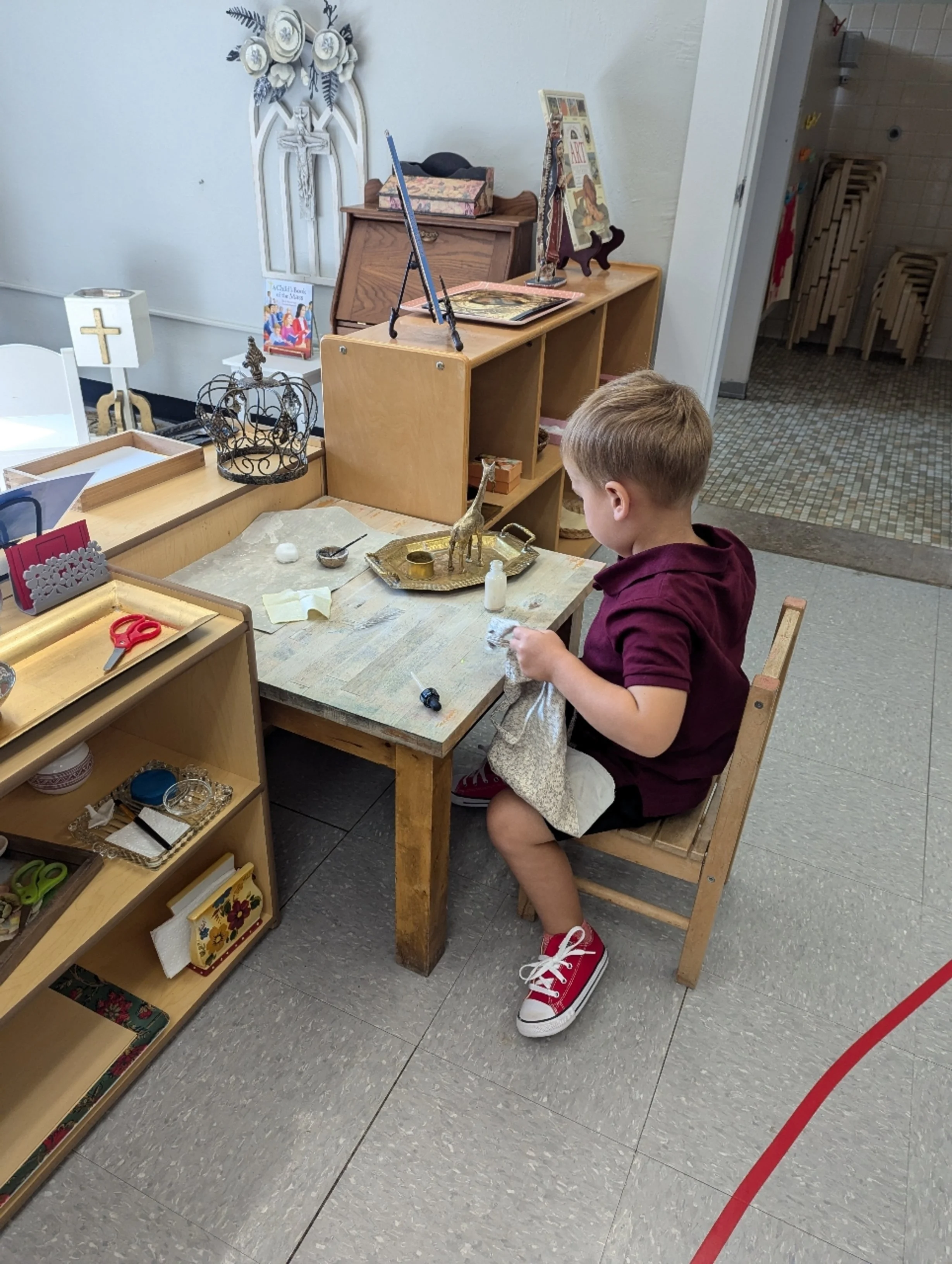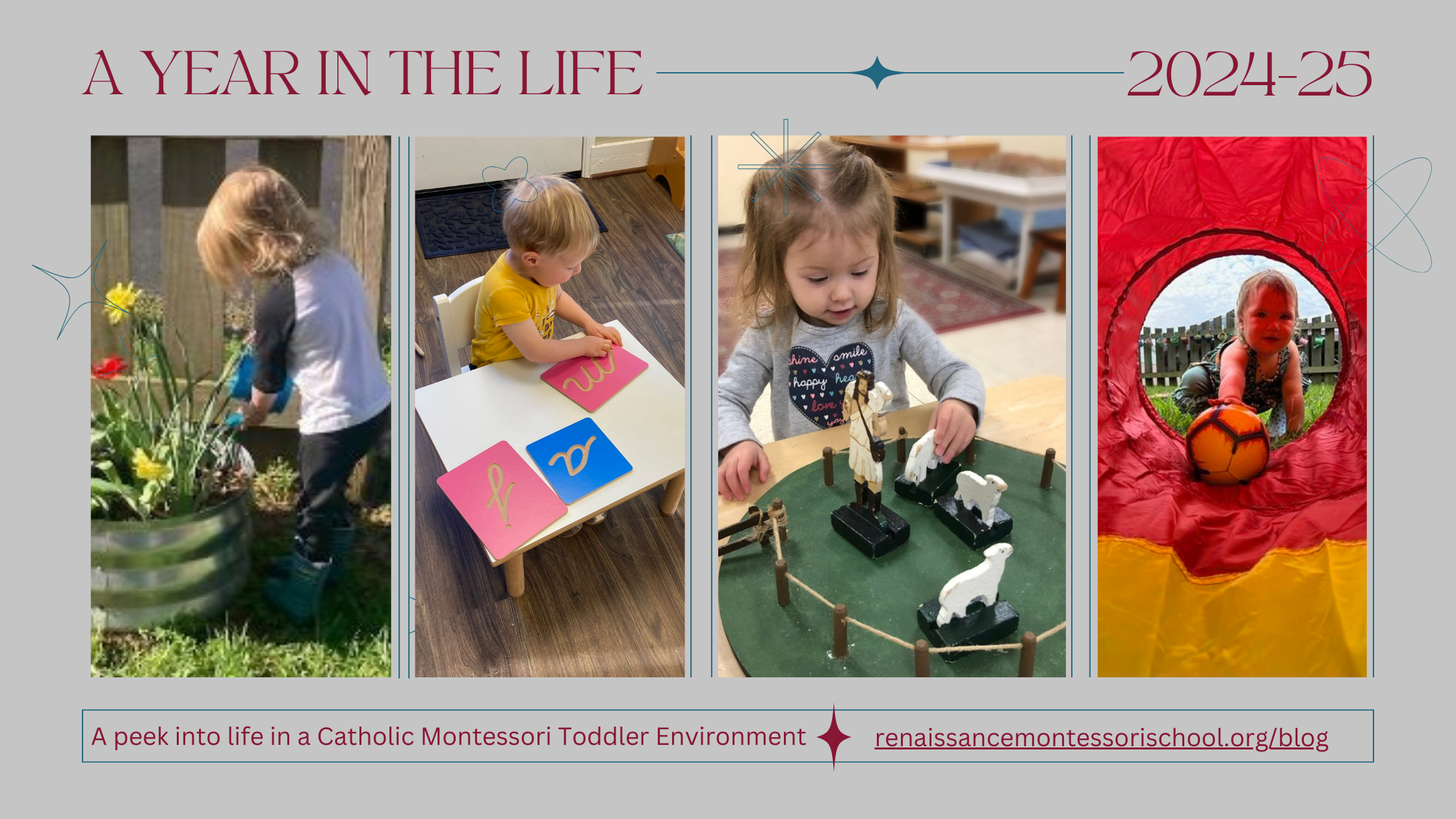Let's talk about geography. For the Montessori savvy among you, you already know that we use the word "geography" in a wider and older sense than its current usage as a field of study about topography and the locations of places and settlements. In our curriculum it is a bit like "earth sciences". We are walking the word back to its etymological origins of geo (earth) graphia (writing). Just as the ancients' use of the word "physics" embraced all science of natural phenomena, from their tentative steps in non-mythological cosmology to weather patterns. Our Upper Elementary geography shelf has been home to some of the work relating to our chemistry study. This week they have been exploring the periodic table and diving into what exactly its organization is telling us. Some of our youngest students have been doing much more recognizable "geography work", learning the vocabulary of land and water forms. This week we discussed the finer points of distinction between straits and channels--and learned a new word: canal. Many of us were familiar with it already, if only from singing "Low Bridge" with Mrs. Allen at music time last year. (You may know the song as "Fifteen miles on the Erie Canal". A trio of older lower elementary students have been doing another work on the subject matter as well, a culmination material known as the "imaginary island". There are a number of tiles with landforms, fields, and coastline. They do not fit together in every possible arrangement, but one may create the map of hundreds of unique island lands with this material. But then the fun begins: students follow direction cards asking them to do a number of tasks that gives them reading practice and helps us assess their readiness to move beyond the type of work they did as 6 and 7 year olds and embrace the more abstract and cosmic work ahead of them.
On a more mundane level, early this year the adults in the classroom have been observing how the geography of our redesigned classroom has influenced the children and their work. Now, as Montessorians we are quite aware that our classroom is the meeting ground between the child, the adult, and the prepared environment. I would now like to give you two short glimpses into things which appeared this week on our classroom's wall.
On the side of our classroom dominated by upper elementary seating and work shelves, there is a bulletin board with lots of information for the older students. They can remind themselves of what their baseline follow-up work is and when it is due. For example, a card pinned to the board under "Tuesday" might read "5th Years: Try at least 10 problems from math drawer #28". That is a cue for what skills they ought to practice to build on what they learned in their last fraction multiplication lesson, but also lets them know they should have it done by their next Wednesday math lesson. This board also features 12 beautiful cards made by a few of our 6th years. Each corresponds with a month of the year, and lets us know when the birthdays of members of our community will be. Strangely, we have no birthdays at all in September and October. They come quickly in November with nine different birthdays. (Not every one is that of a student--one is the first birthday of Nicholas de Bernardo and another is mine.) It will be a fun challenge to cook snacks worthy of a birthday when the time comes. So far this year we have made eggs, corn muffin loaves, pancakes, bread, and two amazingly good apple pies. Who knows what the fall will bring.
On Tuesday there was a list of seven names written in chalk at the blackboard on the opposite end of the room. It was the feast day of St. Therese of the Child Jesus. She is a great saint for many reasons, one of which being that she has something to teach people of every age and stage of the journey. A few times a month, a staff member or one of the parents I have helping me keep an eye on the liturgical calendar notice a special day that might have a special draw for the children. Sometimes it is a parent who takes a group of children. Other times we go in the trusty RMS van. Other times multiple vehicles go. The children really get a lot out of it. There is the metaphysical aspect: the graces of the Mass and the power of God's Word proclaimed from the ambo. There are other benefits. Children get to be together in a smaller group and take a little car trip together. It brings folks together in unexpected combinations and gives them an espirit de corps they would not otherwise have. It gives them a chance to get out in the community--showing others and themselves that they can be mature young people going out into the world. I wonder if this also helps them unify their life in a way--usually we do not go to church with our friends. Usually school is one thing and the outside world is another. What wonderful things happen when we blur this distinction. As I have alluded to before, we do not leave our faith in the atrium, nor do we leave our reason in the classroom. There is a sense that even our geography study is a specific subdiscipline within theology. Of course we are subtle and gentle about it. We propose, we never impose. How could we be any other way while working in the vineyard of the One who speaks to us in silence and stillness?



